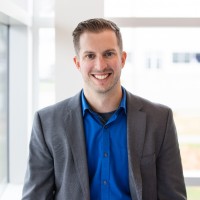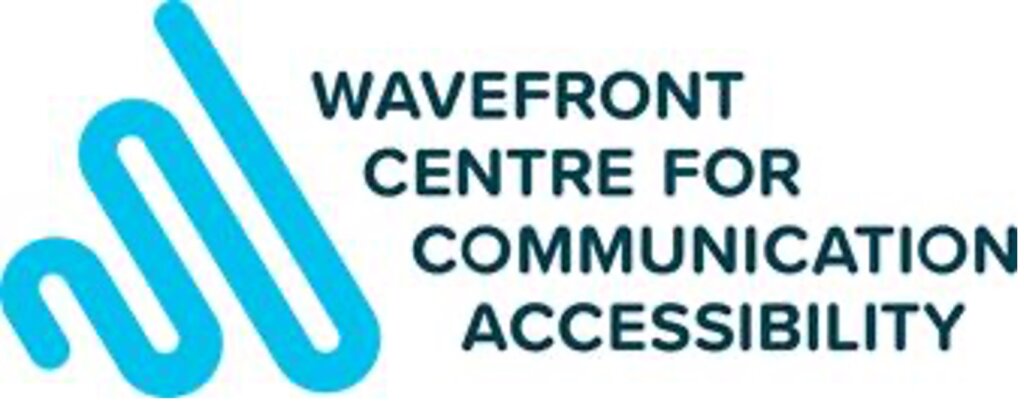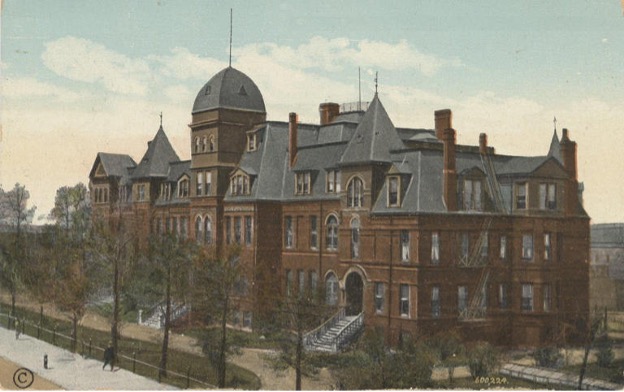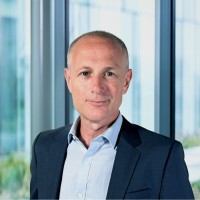Industry News

Congratulations Adam Fitzsimmons
General Manager, VP of Independent Channel Sales at Oticon USA
We are pleased to share that Adam Fitzsimmons, Vice President of Sales and Marketing at Oticon Canada, has accepted an exciting new role as General Manager, VP of Independent Sales at Oticon USA.
Since joining Oticon Canada in 2015, Adam has partnered with hearing care professionals in Canada to expand access to Oticon solutions, strengthen relationships, and introduce programs that continue to support clinics in delivering exceptional care.
Adam’s passion for people, commitment to clinic success, and dedication to advancing the hearing industry will carry forward as he steps into his new role. We thank Adam for his many contributions and wish him every success at Oticon USA.
Phil Hipkiss now General Manager at WSA Canada
As WSA Canada continues to grow and evolve, I’m proud to share that I have stepped into the role of General Manager, Wholesale, leading our Signia, Widex, and Rexton hearing aid brands across Canada.
Having been part of WSA for more than eight years, I’ve had the privilege of working alongside incredibly passionate teams across our organization — from finance and operations to sales and marketing. Throughout this journey, one thing has always remained clear: our success is built on strong partnerships with the hearing care professionals who trust our brands every day.
Before joining WSA, I spent several years building and running my own businesses, an experience that shaped my entrepreneurial mindset and deep appreciation for the challenges and opportunities that come with leading a client-focused organization. That same spirit drives me today — to think creatively, act decisively, and ensure our customers always have the tools and support they need to help their patients hear their world better.
As we move forward, my focus is on strengthening our relationships with hearing care professionals across Canada, improving how we deliver value through our brands, and continuing to champion innovation that benefits both professionals and patients.
At WSA, we believe that when hearing care professionals succeed, their patients thrive — and that’s what inspires our work every day.
Phil Hipkiss, CPA-CA
General Manager, Wholesale – WSA Canada


Wavefront Centre for Communication Accessibility appoints Andrea Bull as Chief Executive Officer
Vancouver, BC — October 17, 2025 — The Board of Directors of Wavefront Centre for Communication Accessibility proudly announces the appointment of Andrea Bull as its new Chief Executive Officer.
Andrea’s appointment marks a pivotal step in Wavefront Centre’s mission to enhance accessibility, strengthen community connection, and drive innovation in hearing health and communication accessibility across Canada.
With more than twelve years of experience in audiology, hearing health advocacy, and strategic leadership, Andrea brings a unique combination of clinical depth, operational discipline, and human-centered leadership. Andrea first connected with Wavefront Centre during her studies as a UBC Master of Audiology student — an experience that helped shape her lifelong dedication to accessible, client-focused care. Her professional career brings her full-circle, back to the communities Wavefront Centre serves, including individuals who are Deaf, Hard of Hearing, and DeafBlind.
Andrea holds a Bachelor’s degree in Biology and Neuropsychology, a Master’s degree in Audiology and an MBA — credentials that enable her to bridge the worlds of healthcare, strategy, and innovation with a focus on social impact.
Prior to her appointment, Andrea served as Sales Director for Oticon Western Canada, where she led multimillion-dollar operations and developed teams recognized for their excellence and empathy. Her leadership is characterized by strategic clarity, emotional intelligence, and unwavering commitment to inclusivity.
A respected voice in the hearing health sector, Andrea has served as First Vice Chair of the Board of Speech-Language & Audiology Canada and as Board Director of Public Audiology with Speech & Hearing BC, strengthening advocacy and ensuring equitable access to hearing services across Canada.
“Andrea brings an extraordinary blend of vision, rigor, and compassion,” said Dean C. Powers, Co-Chair of Wavefront Centre’sBoard of Directors. Her commitment to the Deaf, Hard of Hearing, and DeafBlind communities, coupled with her leadership in accessibility and innovation, makes her the ideal person to lead Wavefront into its next era.”
As CEO, Andrea will guide Wavefront Centre’s continued evolution — advancing financial sustainability, expanding national accessibility services, and fostering a culture of innovation that empowers every person to communicate, connect, and thrive.
About Wavefront Centre for Communication Accessibility
Wavefront Centre for Communication Accessibility is a national leader in hearing health and accessibility services, delivering a broad range of programs — from audiology and hearing care to sign language interpreting, captioning, employment support, and accessibility consulting. Through these initiatives, Wavefront Centre empowers individuals who are Deaf, Hard of Hearing, and DeafBlind to connect, communicate, and thrive.
Proposed settlement reached for victims of abuse at schools for deaf
Story by Frances Willick (Sept 20, 2025 CBC News)

The Halifax School for the Deaf was a boarding school in Halifax located on Gottingen Street, where the George Dixon Community Centre stands today. ©Facebook
A proposed settlement has been reached in a class action lawsuit over the abuse of former students at schools for deaf children in Nova Scotia.
The lawsuit, which was filed in 2015, alleges that the province of Nova Scotia and the Atlantic Provinces Special Education Authority were negligent and breached their fiduciary duty in connection with the schools, which include the School for the Deaf in Halifax and the Interprovincial School for the Education of the Deaf in Amherst, N.S.
The province and Atlantic Provinces Special Education Authority will also deliver a public apology as part of the settlement.
In a statement, Attorney General and Justice Minister Becky Druhan said: "We are grateful to the former students for their courage in coming forward. While the harms can never be undone, we sincerely hope this settlement offers some measure of justice, healing and acknowledgment."
Compensation for victims
Wagner says there are about 1,200 people who may be eligible for compensation. About 100 members of the class have died since the class action was filed, he said.
Victims will be able to apply for two types of compensation payments if the settlement is approved.
The systemic harms payment will compensate for harmful experiences commonly suffered by the victims. That payment is determined based on how long a person attended the school.
From: https://hearinghealthmatters.org/hearing-news-watch/2025/cochlea-alive-outside-body/
Scientists Keep a Mammalian Cochlea Alive Outside the Body for the First Time
October 4, 2025
In a groundbreaking achievement, scientists at The Rockefeller University have succeeded in keeping a small segment of a mammalian cochlea alive and functional outside the body—allowing them, for the first time, to directly observe the mechanics that make hearing possible.
The achievement, led by the late A. James Hudspeth and colleagues in the Laboratory of Sensory Neuroscience, represents a major leap toward understanding how the inner ear amplifies sound and why its delicate sensory cells fail in hearing loss.
Re-creating the living cochlea
The cochlea—an intricate, spiral-shaped organ encased in the densest bone in the human body—has long frustrated researchers who sought to observe its workings in real time. Hudspeth’s team designed a two-compartment chamber that mimics the cochlea’s native environment by continuously bathing an excised tissue sliver in nutrient-rich fluids known as endolymph and perilymph while maintaining natural temperature and voltage conditions.
By placing a 0.5-millimeter fragment of the gerbil cochlea inside this chamber, the researchers could monitor both its mechanical and electrical responses to sound. “We can now observe the first steps of the hearing process in a controlled way that was previously impossible,” said co-first author Francesco Gianoli, a postdoctoral fellow in Hudspeth’s lab.
High-resolution optical coherence tomography revealed that the isolated tissue vibrated as a single unit, allowing precise measurement of how hair cells—tiny mechanosensory receptors topped with hair-like bundles—responded to incoming sound waves. The preparation preserved the cochlea’s “active process,” the energy-expending mechanism that amplifies weak sounds, sharpens frequency tuning, and compresses loud ones into a manageable range of perception.
Confirming a unifying principle of hearing
Using this new ex vivo system, the researchers demonstrated that even in isolation, the mammalian cochlea retains the four cardinal hallmarks of the active process: amplification, frequency tuning, compressive nonlinearity, and the generation of distortion products.
Measurements of electrical signals known as cochlear microphonics revealed that the responses grew sub-linearly—following a one-third power law—as sound intensity increased, a mathematical signature of a system operating near a “Hopf bifurcation,” a critical transition point between stillness and self-sustained oscillation.
This finding offers long-sought evidence that the same biophysical principle governs hearing across species—from insects and amphibians to mammals. “The active process operates locally, independently of traveling waves, and the sensory epithelium achieves active amplification by operating near criticality at a Hopf bifurcation,” the authors report in PNAS (2025).
“This result reveals a unified biophysical principle that underlies hearing across insects, nonmammalian vertebrates, and mammals alike.”
Building on five decades of work
Hudspeth, who passed away in August 2025, devoted more than fifty years to uncovering the molecular and neural basis of hearing. His earlier studies established how hair bundles in non-mammalian species amplify sound through active motion. The new experiments, completed shortly before his death, extend that principle to mammals—settling a question that had divided the field for decades.
Biophysicist Marcelo Magnasco, who collaborated with Hudspeth on prior research, called the work “a masterpiece” and “one of the most impressive experiments of the last five years.”
The companion paper in Hearing Research details the methodological innovations that made it possible, including refined dissection techniques, precise calcium control, and a system to adjust pressure across the cochlear partition to maintain the tissue’s natural tension. These adjustments allowed the scientists to consistently reproduce the compressive nonlinearities characteristic of healthy hearing in living animals.
Implications for future hearing research
Beyond confirming a core theory of auditory mechanics, the new platform opens unprecedented experimental possibilities. Because the ex vivo cochlea remains viable and responsive, researchers can now test how specific drugs, genetic mutations, or environmental conditions affect the delicate interplay of cells that transduce sound. “For example, we will now be able to pharmacologically perturb the system in a very targeted way that has never been possible before, such as by focusing on specific cells or cell interactions,” said co-first author Rodrigo Alonso.
According to the authors, understanding the precise dynamics of the cochlea’s active process could inform strategies to prevent or reverse sensorineural hearing loss—the most common cause of permanent hearing impairment.
“So far, no drug has been approved to restore hearing in sensorineural loss, and one reason for that is that we still have an incomplete mechanistic understanding of the active process of hearing. But now we have a tool that we can use to understand how the system works, and how and when it breaks—and hopefully think of ways to intervene before it’s too late.”
Magnasco noted that Hudspeth viewed the results as a crowning achievement. “Jim had been working on this for more than 20 years, and it’s a crowning achievement for a remarkable career,” he said.
Toward therapeutic applications
While direct treatments remain distant, the ability to visualize and manipulate the cochlea’s living mechanics ex vivo may accelerate the development of regenerative or pharmacological therapies. Future experiments could explore how to modulate the “critical state” that maximizes sensitivity without triggering damage, or how to restore that equilibrium in ears compromised by aging or noise exposure.
“The cochlea’s fragility and inaccessibility have long been barriers to understanding hearing loss,” the authors conclude.
“By bridging the gap between cellular and whole-organ behavior, this approach provides a new window into the active physics of hearing—and a platform to test how we might one day repair it.”
References:
- Alonso, R., Gianoli, F., Fabella, B., Belenko, N., Magnasco, M., and Hudspeth, A. J. (2025). Amplification through local critical behavior in the mammalian cochlea. Proceedings of the National Academy of Sciences, 122(29), e2503389122. https://doi.org/10.1073/pnas.2503389122
- Gianoli, F., Alonso, R., Fabella, B., Belenko, N., Magnasco, M., and Hudspeth, A. J. (2025). Toward an ex vivo preparation for studies of the cochlear active process in mammals. Hearing Research, 462, 109288. https://doi.org/10.1016/j.heares.2025.109288
Demant Announces Sale of Oticon Medical to Nordic Healthcare Investor Impilo
October 23, 2025
SMØRUM, DENMARK — Demant has signed an agreement to sell Oticon Medical to Nordic investment firm Impilo for a total contractual consideration of up to DKK 600 million (approximately USD $85 million). The transaction concludes Demant’s divestment of its Hearing Implants business area.
The agreement ensures continuity for Oticon Medical’s operations and supports its long-term market position, future growth, and continued investment in innovation for the benefit of customers and patients.
“I’m very happy that Impilo is taking over the ownership of Oticon Medical. Impilo is a Nordic company that knows the healthcare – and especially the MedTech – sector very well. They have a long-term perspective, and I’m confident that Oticon Medical will continue to prosper under its new ownership. Oticon Medical is leaving Demant in good shape, as the company has delivered good growth over the years and recently enhanced its product portfolio with the launch of the flagship product, Sentio. Demant is committed to supporting the transition of the business for the benefit of customers, patients and employees”
–Søren Nielsen, President & CEO of Demant
As part of the agreement and to ensure business continuity, Demant will support Impilo for a defined period as it develops Oticon Medical into a stand-alone business. These transitional services will include joint development of next-generation products, supply of existing and future sound processors, and provision of local sales, customer support, and administrative services until these functions are fully established within Oticon Medical.
“We are thrilled to acquire Oticon Medical from Demant. Under Demant’s leadership, Oticon Medical has established itself as a global leader in the bone-anchored hearing systems (BAHS) market, renowned for its innovation and unwavering commitment to patient care. This acquisition marks an exciting new chapter for Oticon Medical, positioning the company for even greater growth and long-term success. In close partnership with Demant, we look forward to investing in and accelerating the development of cutting-edge BAHS solutions to further enhance patient outcomes worldwide,” said Fredrik Strömholm, Managing Partner at Impilo.
From: Used with permission from Hearing Health Technologies Matters


